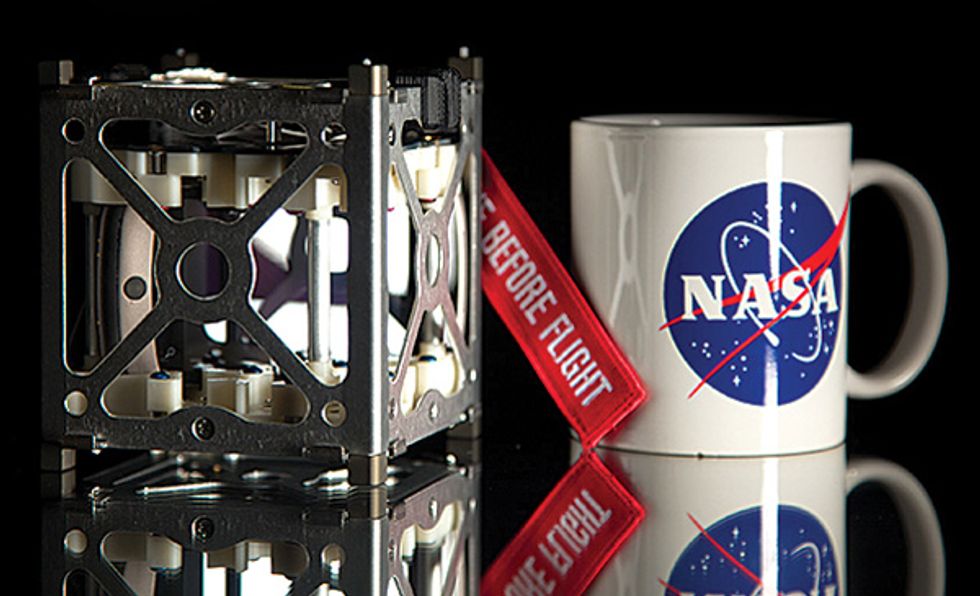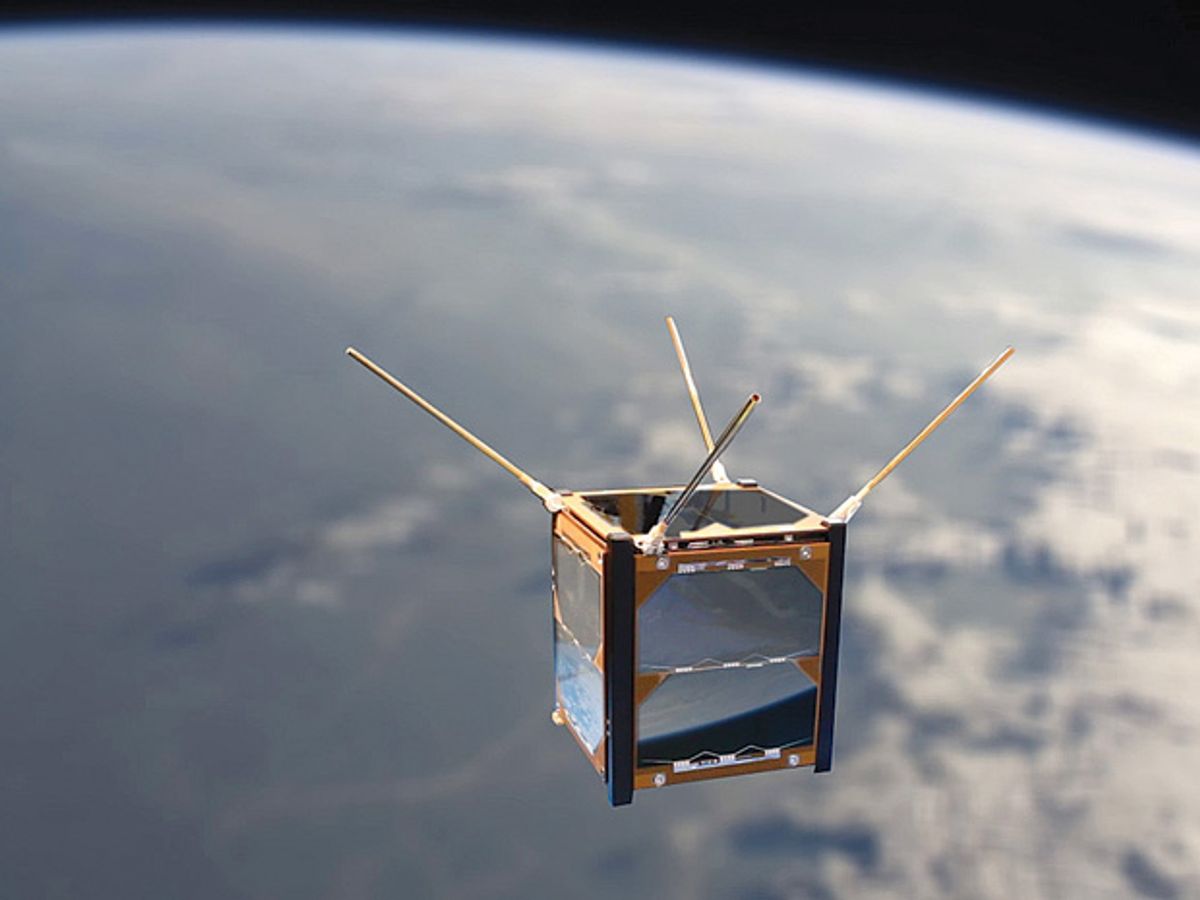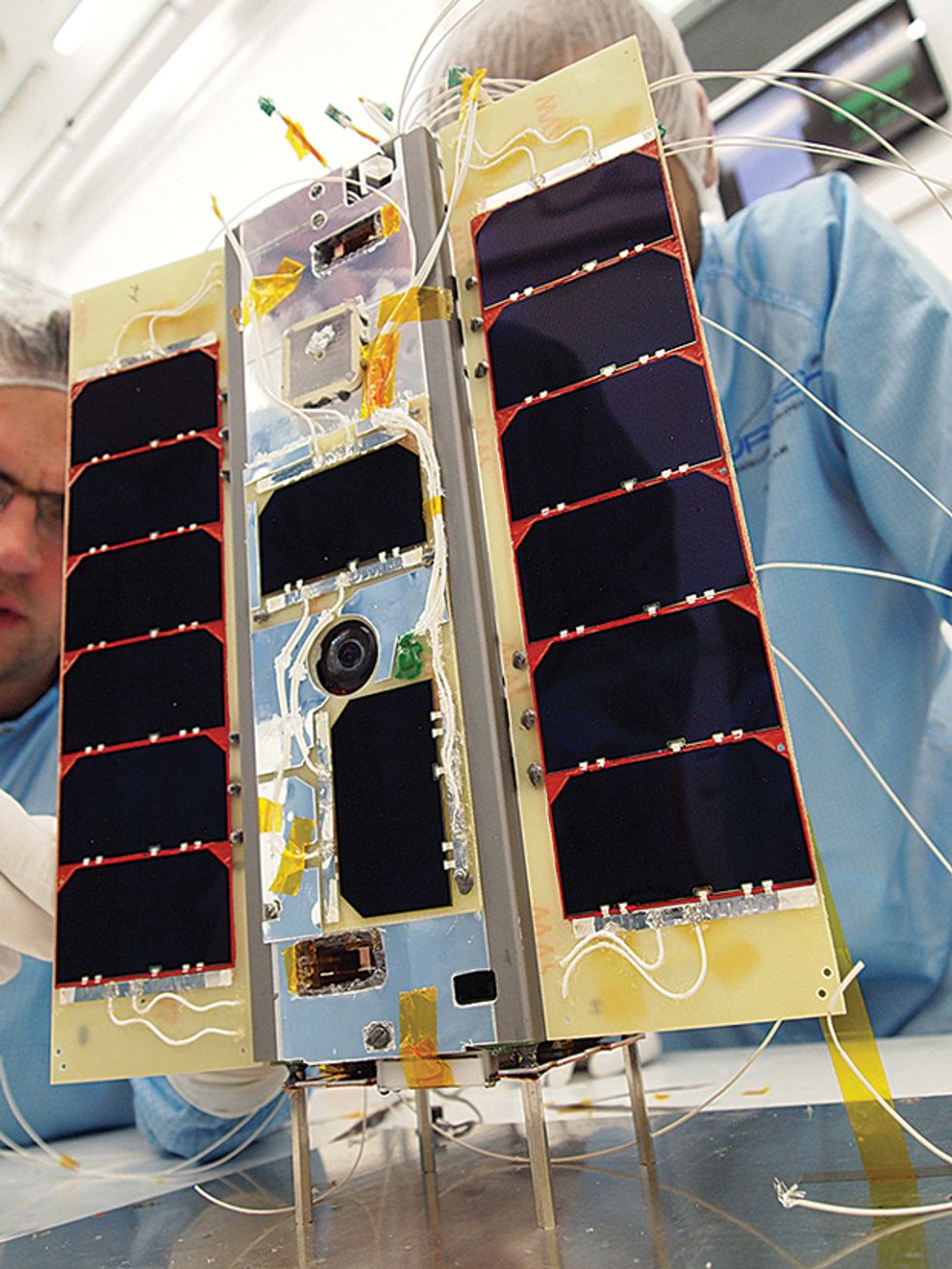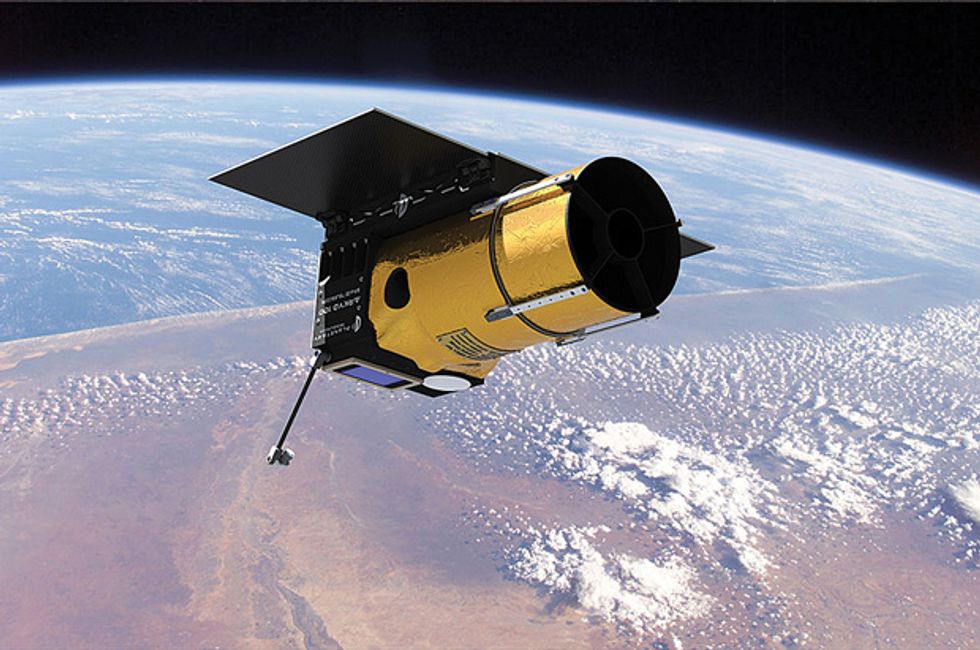In 1957, Arthur Frommer traveled Europe on US $5 a day, and the Soviets launched Sputnik 1. Today, $5 scarcely covers an espresso at a Parisian café, but it could buy 3 hours on a satellite packed with technology that would have seemed like science fiction to Cold War rocketeers.
In August, two small satellites were sent to the International Space Station (ISS) and will be launched into their own orbits in November. At a cost of about $35 to $45 per day of run time, purchasable in blocks of three days or more, students and hobbyists can run experiments with the satellites. These ArduSat spacecraft, from the start-up NanoSatisfi, were developed from an open-source design based on the Arduino microcontroller. Each is a cube 10 centimeters on a side and has a magnetometer, a spectrometer, temperature sensors, a gamma-ray detector, a Geiger counter, and a 1.3-megapixel digital camera.
The ArduSats are attracting a variety of experiments and experimenters, says Chris Wake, NanoSatisfi’s vice president of business development: “Computer science classes are using it to train students on open-source software and hardware, while an earth sciences class has experiments to measure Earth’s magnetosphere.”

NanoSatisfi keeps the price down by running 10 experiments in parallel on each ArduSat and using off-the-shelf components. The satellites have no radiation shielding and will remain aloft for just a few months before reentering the atmosphere and burning up.
NanoSatisfi isn’t alone in the citizen-science satellite game. In February, the United Kingdom orbited STRaND-1 (Survey Training, Research, and Nanosatellite Demonstrator), the first satellite built around a standard consumer smartphone, the Google Nexus One. The phone was loaded with Android apps developed by university students and enthusiasts, such as an app intended to determine the satellite’s position using the onboard camera. Communication with STRaND-1 was lost shortly after launch but was restored a few months later.
In April, NASA launched its own pair of Android PhoneSats, costing just $3500 apiece. During their week-long lives before reentry, the satellites took sensor readings and snapped images of Earth, beaming down the data in small packets to amateur radio operators around the world.
While building a satellite may be easier than ever, getting it into space remains fearsomely complex. For the past four years, a small company called NanoRacks has been flying science experiments into orbit on board the space shuttle and on ISS resupply missions. NASA and Japanese astronauts control the experiments, many of which have been designed by high school students. Over 20 000 U.S. students have been involved, raising the necessary funds (a 30-day mission starts at $30 000) from bake sales and car washes.
Last year, NanoRacks deployed its first satellite from an ISS air lock. “Today we have over 50 satellites under contract. We’re now designing our own cubesat dispenser to maximize how many satellites we can put out during a hatch opening,” says Jeffrey Manber, NanoRacks’ founder and managing director.
NanoRacks will handle the November launch of the aforementioned ArduSats as well as two other high-profile citizen-science satellites. Planetary Resources, a start-up hoping to prospect and mine near-earth asteroids, is planning space telescopes that armchair astronomers will use to take high-resolution photos of celestial objects for $200. Cheaper still is SkyCube, built by Southern Stars. This ultrabasic satellite will broadcast a 120-character tweet of your choice from orbit for just $1 or shoot a low-res image of Earth for $6.
“We want to democratize access to space by crowdsourcing data analysis, software, and hardware,” says Peter Diamandis, cofounder of Planetary Resources. Crowdsourcing money is also part of the plan: NanoSatisfi, Planetary Resources, and SkyCube all launched their efforts on the crowd-funding website Kickstarter.
“Kickstarter validated our market areas around researchers, students, teachers, programmers, and hobbyists,” says Wake. His company, NanoSatisfi, has since completed a round of venture capital funding. NanoRacks’ Manber sees a bright future ahead: “I believe that by 2020, every school district in America will have had the chance to participate in space.”
This article originally appeared in print as “Space on $35 a Day.”


